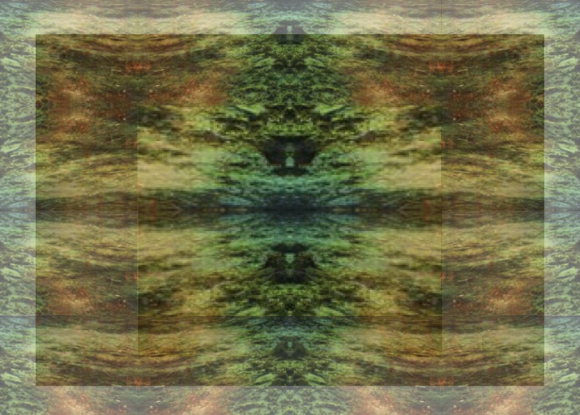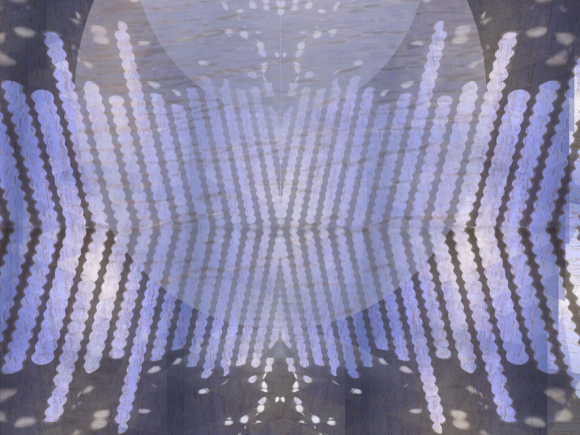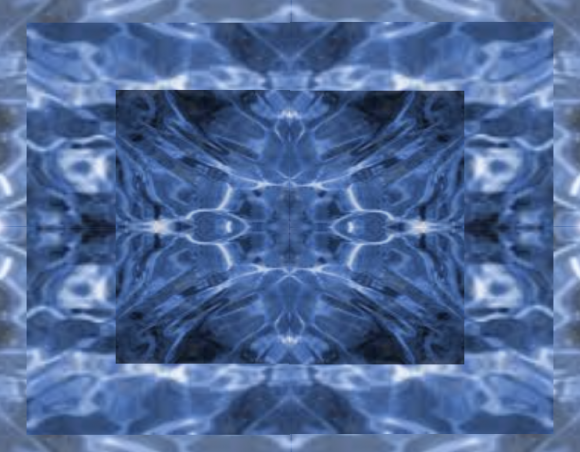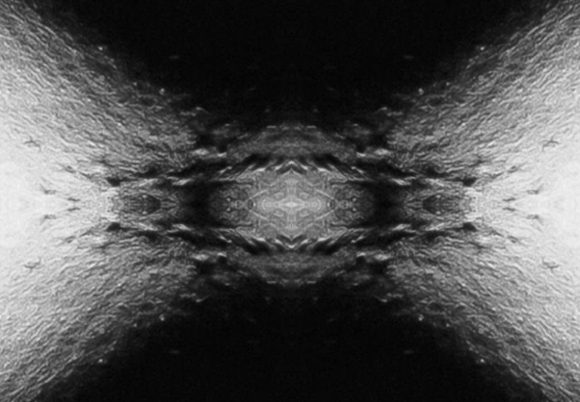There is an air of mysticism about claims, often found in Jungian psychology, that the unconscious ‘arranges’ things in the external world. How can something psychological, something that is — so to speak — merely ‘in my head’, have real influence over physical objects and other people? Is that just a figure of speech, or should it be taken seriously? And if the latter — how? Let’s clear this up!
1. We should notice right away that Jung himself was aware of this complication, and he addressed it several times, although in somewhat scattered remarks. Here is one he made early on in his correspondence with Wolfgang Pauli:
Man stellt sich das Unbewusste gemeiniglich als einen psychischen Tatbestand in einem Individuum vor. Die Selbstabbildung, die das Unbewusste von seiner zentralen Struktur entwirft, stimmt aber mit dieser Auffassung nicht überein, sondern es weist alles darauf hin, daß die zentrale Struktur des kollektiven Unbewußten nicht örtlich zu fixieren ist, sondern eine überall sich selbst identische Existenz ist, die als unräumlich gedacht ist und infolgedessen, wenn auf den Raum projiziert, überall im Raume vorhanden ist. Es scheint mir sogar, als ob dieselbe Eigentümlichkeit auch auf die Zeit bestünde. [PJB 18]
Thus Jung thought that the unconscious is better seen as a structure outside space and time, i.e. located outside the empirical processes we experience as the physical world and the mental world. That is difficult to grasp, and so far, it is mainly defined negatively: by saying what the unconscious is not. In particular, it is neither a particular mental process or state in an individual person nor a physical structure that can be located in space and time (which it would be, if it were ‘in the head’, i.e. a neural structure in the brain).
2. When Jung says that the unconscious seems to be none of these things, he has various theoretical reasons for it. One of them he points out in this quote: the unconscious, when it projects itself into concious contents (dream symbols, behaviors etc.), suggests so itself. That is what he calls “die Selbstabbildung, die das Unbewusste von seiner zentralen Struktur entwirft” [“the self-projection made by the unconscious of its own central structure”]). In other words, Jung follows some indirect indicators here, based on his psychological investigations. A speculation, to be sure, but at least one based on a phenomenology which he finds in empirical data. (As he himself never gets tired to point out.) I shall not follow this particular clue in this post, but leave that for later on.
Another reason lies, according to Jung, in the only way in which we can get to know anything about the unconscious archetypes: after they have grabbed hold of, and shaped, conscious contents. “Was immer wir von Archetypen aussagen, sind Veranschaulichungen oder Konkretisierungen, die dem Bewußtsein angehören” [“whatever we can say about archetypes has been visualized or made concrete, and belongs to consciousness”, GW VIII, 240]. That is an interaction which does not leave the originally unconscious content undisturbed, and therefore “any expression of an archetype is already conscious and therefore to an indeterminable degree different from that which has given rise to the expression” (GW VIII, 240). This is similar to a problem in modern, sub-atomic physics, where every observation has an indeterminable effect on the observed structure, thus making it impossible to subtract out the observer is if it had not been involved. (And Jung, of course, points that parallel out himself.)
It is not quite clear how Jung arrives, from this observation, at the conclusion that the archetypes cannot be psychic in nature. (Much less, why they also cannot be physical, namely: physiological in nature, especially since Jung uses the parallel with physiology extensively in his exposition.) But I’ll leave that line of argument for later exploration, too.
3. The archetypes, then, are
[…] ein Gebiet, das einerseits keine Eigentümlichkeiten des Physiologischen aufweist, andererseits und in letzter Linie auch nicht mehr als psychisch angesprochen werden kann, obschon es sich psychisch manifestiert.
[…] a sphere which, on the one hand, has none of the characteristics of the physiological, but on the other hand in the end also cannot be called psychic, although it manifests itself psychically.
[GW VIII, 242]
This means that the central structure of the unconscious is nothing psychic (i.e. not strictly part of the psyche), although it is of course something psychology talks about. It is also nothing material (phsyical). Thus the hypothesis is that there must be something of a third kind (neither mental nor material), which Jung dubbed psychoid (GW VIII, 202-204, 240).

4. Now what does all this have to do with synchronicities?
Given that the familiar mental phenomena (the contents of consciousness) are rooted in a reality outside them (the psychoid archetypes), and given that the familiar physical world of classical physics is just a stable superstructure over a more complicated, unobservable quantum reality, we might speculate (and Jung does, at GW VIII, 241) that these underlying realities may turn out one and the same thing, of which the mental and physical worlds are merely different aspects. That is the point where Jung explicitly mentions synchronicities: they seem to him an indicator that there must be at least some connection between these two aspects.
We must be careful here with our terminology: whatever the connection is between that underlying psychoid reality, on the one hand, and both the mental phenomena psychology or congnitive science talks about and the physical phenomena the natural sciences talk about, on the other: it is not a causal connection. In other words: the psychoid reality does not cause conscious thought, and it does not cause events in the outside world, either. That is because the terminology of ‘causation’ is already reserved for (and well understood as) a mechanism in the physical world. And we have no basis (yet), neither theoretical nor experimental, for extending it so that it would cover the psychoid either.
Pauli astutely observes:
Nach [Jung’s] Auffassung des “synchronistischen” Phänomens […] entsteht dieses ja durch duplicatio oder multiplicatio eines unanschaulichen Anordners [i.e., the psychoid central structure] […] In diesem Sinne könnte man den Anordner auch als Ursache des synchronistischen Phänomens bezeichnen. Diese Ursache wäre allerdings nicht in Raum u. Zeit zu denken. Wenn umgekehrt nur Objekte in Raum und Zeit als Ursache bezeichnet werden, dann erscheinen in der Tat die synchronistischen Phänomene als “akausal”. [PJB 42, Pauli’s emphasis]
5. Thus it would be a mistake to over-extend the notion of causality, so that it would include, not just the whole of the physical world, but also the relationship between the psychoid and the physical world.
The mistake would be even worse if we also blurred the distinction between the psychoid and the psyche (the mental processes in individual subjects). For then we might end up with a view in which we first — by way of the blurring — confuse a mental event (say, a thought in an individual subject) with the psychoid structure, and then secondly — via the over-extension — ascribe that psychoid structure a causal influence over the outside world.
In other words, we would end up with suspecting a kind of “magic” at work, a mysterious force unknown to science by means of which thoughts can move objects around or influence other people’s behavior. Such a “magical” force would have to work by causation, namely, it would be the instrument of something mental (something “in the head”) which causes something outside, i.e. has effects in the external world. And that is precisely the misunderstanding that we started from, the suspicion that Jung says that something “outside the head” causes events in the external world.
Jung explicitly rejects that view:
Wir glauben wenigstens so viel von der Psyche zu wissen, daß wir ihr keine Zaubermacht zutrauen dürfen, und noch viel weniger dem Bewußtsein. […] Wir sind aber zu [der] Annahme gedrängt, […] einen objektiven Sinn, der kein bloß psychisches Produkt ist, festzustellen, […] sofern wir es nicht vorziehen, auf eine magische Kausalität zu regredieren und der Psyche eine deren empirischen Bereich weit überschreitende Macht zu vindizieren. [GW VIII, 518]
6. One clarification remains to be made, however. In the quote with which I started above (see §1), Jung restricts all this to the collective unconscious: he does not want to include the personal unconscious, and call that psychoid. ‘The unconscious’, for Jung, is a relatively broad term, which covers various different things, and for some of them it is more a matter of degree or even context whether they are conscious or unconscious. Certainly, the unconscious is not entirely made up of the psychoid structure, but has a broader extension (GW VIII, 210, 214-215).
7. The unconscious, then, is not entirely in the head; when we account for synchronistic phenomena we will likely refer to that which is both covered by ‘the unconscious’ and which is not in the head, i.e. the psychoid “central structure”. The archetypes of the collective unconscious expressly fall under that term (GW VIII, 549). However we account for their influence over the external world, though, we must not make the mistake of construing it as a form of causation.



